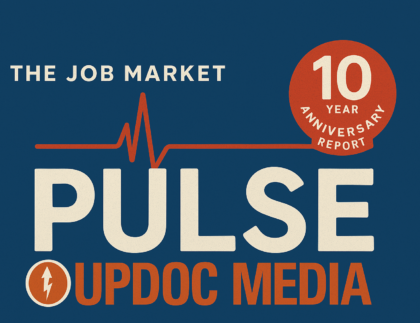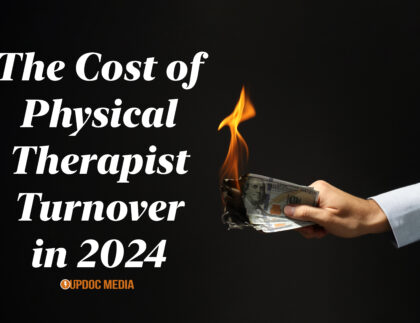
So, without further ado, here is…!
The PT Job Market FAQ (2017)
1. How much do new grad PTs get paid on average?
Per the data gathered from the #PTJobMarketPulse, the answer is: $72k/year (+/-) $15k.
Yeah… #ThatStandardDeviationThough!
So, what’s the beef?! Well, the cost of living throughout the United States is so variable that most companies can afford to pay less and still have a fairly satisfactory pool of human resources. This is also highly dependent on region due to what payers are willing to dish out for their contracts. All to say, how much you get paid is a regionally dependent outcome.
2. Do I have room to negotiate as a new grad?
Everyone ALWAYS has the room to negotiate at any phase of their career. NOT negotiating is not just throwing away money, it devalues yourself right in front your future boss & colleague.
Like How?!
Glad you asked. Like the following scenarios:
- New grad PT gets offered $30/hour. Wiggle room is “asked for” and a sign on bonus is given in return. A few years later, it is discovered that PTAs make $32-35/hour in the region. (*whomp whomp* … that was me. LOL!)
- Fairly seasoned PT changes settings. An offer in the mid-$30/hour is made. Wiggle room is requested, and, the hiring manager counters his own offer and automatically bumps the PT up to high $30s/hour.
- New grad PT wants to work in Acute Care. Mid $30s/hour is offered. Counter is made and accepted at $46/hour and $52/weekends for a full time position.
- PRN outpatient PT opportunity presents itself. $45/hour is offered; it is countered at $65/hour… $59/hour is agreed upon immediately after.
ALSO! For months & months, PT companies have been gobbling up talent left & right… operating “at a loss” (per budget) to prepare for the rapidly changing times in healthcare. How do we know this? Other than the fact we consult for PT companies, we know that Q1 2017 was the HIGHEST PAYING quarter we’ve seen… with staff PTs getting paid nearly as much as their supervisors.
3. When do I apply or express interest in a position?
As early as you feel comfortable. 80% of new grads who land their 1st choice position, do so strictly by networking (which is highly effective via social platforms!). From the employer’s perspective, hiring is a game of finding the RIGHT FIT (relationships, working dynamics, team cohesiveness, culture)… not necessarily the best credentialed or best experienced applicant.
The final question every hiring manager needs to ask is: “Will I (and, my team) be happy to have this person as part of my team for 2080 hours a year?” If so, the offer is made.
4. How do I find out what’s “normal pay” for my region and setting?
Let’s do you one better. How about a live trended database, sent via email periodicals comparing jobs by:
- Setting/Specialty
- Location/State/Zip Code
- Experience Factors
- Job Type
- And, Industry Trends
The same database that has helped so very many of your colleagues get bumps in pay before and after hiring? If that sounds groovy, check out the Physical Therapy Job Market Pulse.
PS. The downloadable raw data spreadsheet comes via email only & I (Ben), manually send it out… cuz that’s how I do.
5. Are PT companies simply out to get me?
Absolutely not! As mentioned above, many companies have switched their approach in capturing talent by paying above market averages to ensure they have the right talent for the right time when they need to renegotiate contracts for better deals.
ALSO, many private practitioners have been using the PT Job Market Pulse to generate fair market compensation packages. Yes, especially in private practice: The majority of owners & clinic managers/directors are genuinely concerned with your financial well being & ensuring they are paying you fairly and for the value you bring. In fact, there are companies now paying entry level full time equivalent (FTE) market value for their residents… when “competitors” are paying residents 60-75% of FTE.
Yup. It’s happening!
6. What should I consider in a compensation package?
These 6 dimensions:
- Salary Cash Value
- Employee Benefits
- Perks (Fringe Benefits)
- Workplace Culture
- Workplace Opportunity
- Work-Life Balance
Most companies cover all six dimension in some way. Many times, there is a seesaw effect with these dimensions: high salary many mean low benefits; great benefits may pay less up front; a wonderful workplace culture may mean little opportunity to move up; etc. etc. etc.
P-to-the-S: Be cautious about WHEN benefits become active. Many companies require you to work two full calendar months before benefits kick in. That means, if you start working on January 3rd, benefits don’t start until April 1st. And, “No.” That’s not an April Fool’s joke. This happens because such companies will only consider all of February and March as “full months” and January as a partial month since you didn’t start on January 1st. #MajorBummerDude
7. How/When do I bring up negotiations in pay?
It’s best to do this as transparently and as early as possible. If you are currently trying to land a job, be sure you openly discuss this for either present or future. Many employers are very comfortable writing in some conditions after probation or after your 1st year to discuss a bump in pay. Others are even happy to talk about it right away… after all, “it’s strictly business.”
I have yet to hear about ANYONE experiencing this after asking for “wiggle room” in pay:
It just doesn’t happen.
And, if it does… that’s a HUGE red flag that you wouldn’t want to be working there, anyway.
8. What happens if I end up in a place that is all sorts of “shady?”
Calmly and rationally express the concern to your nearest chain of command supervisor. Also, document this in an email journal to yourself.
Go through the appropriate channels of compliance concerns as many companies have compliance officers. If you keep hitting a brick wall and get the run around, consider approaching a 3rd party expert on the matter. After all, this is YOUR LICENSE & your career at stake.
Finally, should the proverbial fecal matter hit the fan… you can always GTFO (pardon my French).
As small as a world that PT is, it’s still fairly big. How big? How about a $30-60 billion dollar industry in just outpatient alone, big. Also, that most of the public industry data we have represents less than 1-2% of all the companies out there; so much so that the top marketshare competitors own less than 11% of the total outpatient market. And, that’s JUST outpatient… not to mention acute care, SNF, home health, neuro rehab, unique populations, hybrid models, technology, virtual health, etc. etc. etc.
9. What about mentorship?
Some companies offer formal and informal as well as structured and unstructured mentorship. This may also include options into residency and fellowship as well as leadership tracks.
How common is this? Eh… It’s variable. Typically PT and privately owned corporations will be interested in offering mentorship. Otherwise, larger organizations weave this as a byproduct of the new employee on boarding & orientation process.
Usually, the following question is: “Do I need mentorship? I keep hearing it’s critical!” My answer is: Yes.
Mentorship played a HUGE role in getting me to where I am now.
Everyone needs mentorship. It’s a complete game changer. However, you may not need it the way you think you do. PT education and training has significantly improved in its various evolutions over the years. The DPTs now are far more advanced than I ever was with my DPT; a testament & credit to the educators leading that charge in our academic programs. What is then happening is that many new grads, demonstrating excellent clinical competence out of the gate, are finding themselves lacking in business training, advance clinical development, and available knowledge of all the career opportunities, especially those beyond the clinical setting.
As a result, what many people are turning to is virtual mentorship such as the now waitlisted PT Masterminds, and, the (shameless plug) Pathfinders Career Acceleration Group that I’ll be personally leading.
 Start Strong. Move Up. Grow Wealth. Kill Debt. Give Back.
Start Strong. Move Up. Grow Wealth. Kill Debt. Give Back.
An acceleration program for your career path, into the next level & beyond.
10. Do many companies offer student loan, CEU, and other benefits in this vein?
Yes! It’s easier for companies to write off expenses in the student loan/CEU world than direct payroll. This area is a wide swinging gate for negotiations. BUT, BE CAREFUL!
Many student loan arrangements require a certain number of years of employment for them to conditionally disperse funds. Also, there are a lot of stipulations for not just this, but other added value financial benefits when it comes to non-compete clauses and other strange conditions that you want to fully explore.
The best way to go about this is via conversation. Openly ask about what can be done in this realm. When done correctly, I’ve seen private practice organizations skim off the top of salary and return greater than 100% of value to student loan assistance. Unfortunately, this is still a world companies are still exploring; there’s no “standard,” per se within healthcare. So, it’s on you to negotiate a fair and reasonable arrangement.
The biggest piece of advice I can give is to know your value.
Many PTs don’t know that, even in the outpatient world, they can easily bring in over $250k of gross revenue to a clinic, company, business unit, and/or department… simply by doing what they do as a PT. A similar story goes for PTAs. #RealityCheck
To this, even asking for a dollar or two an hour is merely a couple thousand dollars more in your pocket, annually… to their ensuring you are happy, stick with them and NOT cost them turnover losses of 15% annually with a replacement cost of 30%+ of your prospective annual salary. Not to mention, the fact that by 2020, there will be far more PTs/PTAs needed than there will be clinician to fill such positions. Hence, the wisdom of many organizations hiring a temporary loss for long term sustainability.
With that, let’s call it a wrap!
Hope you enjoyed this impromptu turned full blog post. As always, should you have ANY QUESTIONS AT ALL… please just reach out. I’m here for ya! 🙂
Until next time, I remain yours in service,
-Ben
 Ben Fung, DPT, MBA
Ben Fung, DPT, MBA
Co-Founder, COO, UpDoc Media
ben@devbox.updocmedia.com
C: 470-BEN-FUNG
Twitter: @DrBenFung
Snapchat: DrBenFung
Instagram: @DrBenFung









